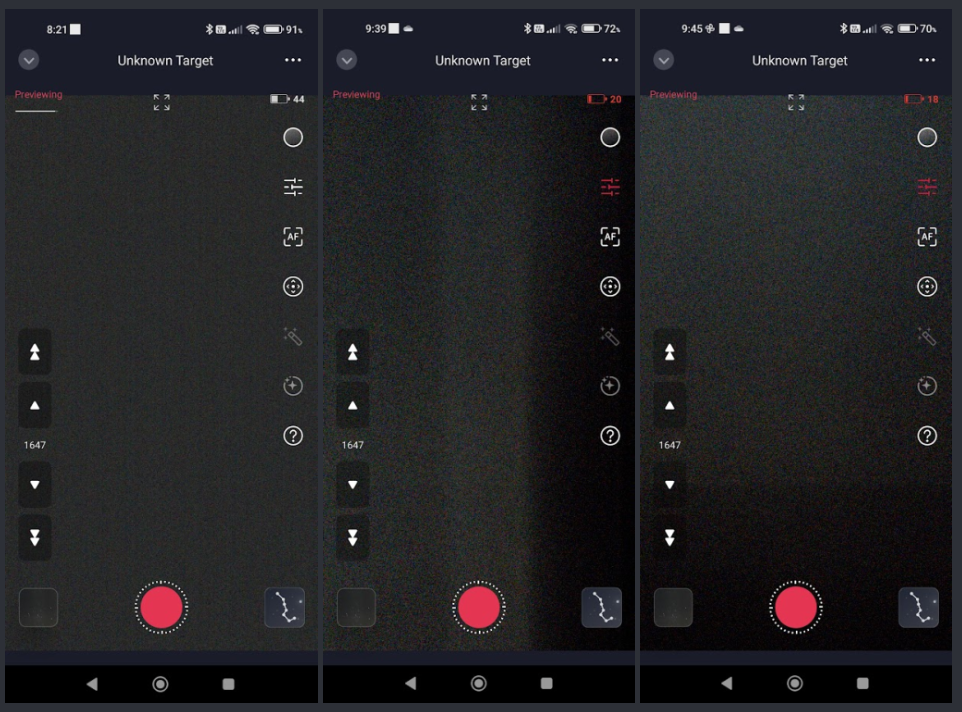I have tried a 40 cm lightshield and it does help a bit but the banding always appears. The fact that the bands are fixed in position irrespectively of the direction the scope points to, speaks against a leak, reflection or stray light explanation. It appears to be an undesired response of the sensor to diffuse light.
The issue can be reproduced if you illuminate the Seestar under angle with a diffuse light source (in a darkened room in order to control the amount of light). Under totally dark conditions the sensor does not show any sign of large scale banding. If illuminated from the sides, you get the vertical banding. When illuminated from top/bottom, the horizontal banding shows up. Below are the screenshots from the experiment.
